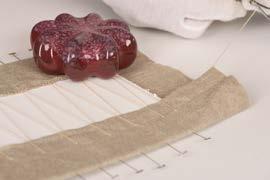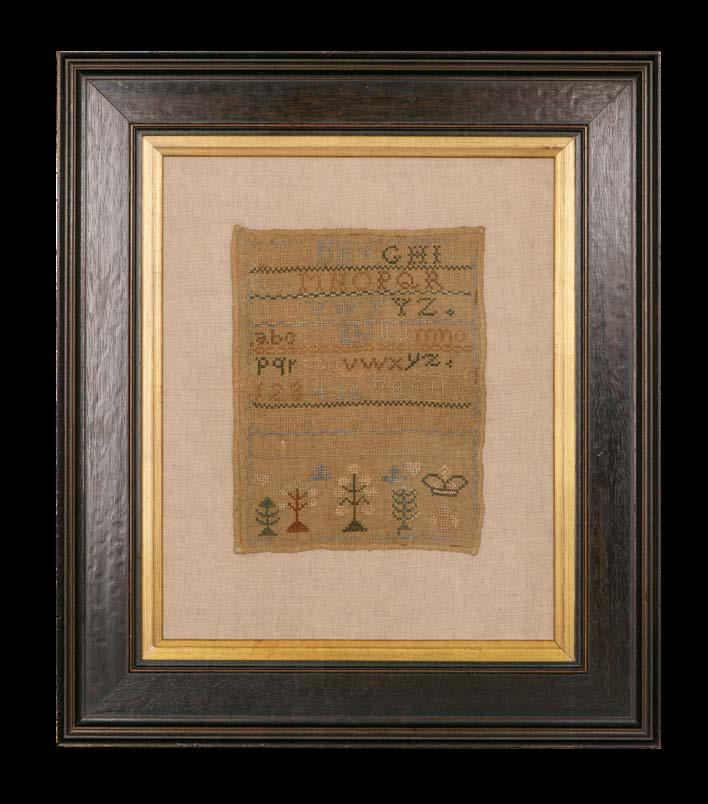
3 minute read
At the end, cut the thread and tie off
Your questions answered
Ask the Experts
Advertisement
QI have been asked to float mount some rather expensive limited edition prints. The problem is my client doesn’t just want them float mounted, he would also like them to sit on top of something such as foam board so they are literally floating above the surface. As they are rather expensive prints of course I don’t want to permanently stick them.
AA couple of points you might want to consider. First, if the paper is lightweight then it is more than likely you will see the hinges through the paper. Float mounting is best done on medium to heavyweight paper. Second, if the artwork has been rolled in a tube or is not completely flat then the edges will be wavy - there is very little that one can do to avoid this problem.
The method you describe is called ‘Shadow Float Mounting’ and the procedure is as follows:
There are a number of hinges one can use, but I use what is termed a ‘Pass Through Hinge’ which is by far the strongest. Cut a piece of 5mm foamboard to approximately 10mm smaller that the artwork, just sufficient that it is not seen when looking at the edges. Cut small slits in the foamboard slightly larger than the width of tape to be used. The slits should
Codes) around on marketing material much more of late. While I’ve used them as a customer myself, I’m not entirely sure if I should be using them for my business. And if so, how I could use them?
AQR codes, while offering a great tool for data capture, aren’t something that will suit the needs of every business. For starters, you are relying on your customers owning smartphones, having access to the right apps, and knowing how to use them properly. Some people may not be as comfortable with this technology as those who use their phones as handheld computers on a day-to-day basis. Doing an accurate assessment of the people you are trying to sell to is important, so that you can be sure the technology will be used accurately and have real impact. be approximately 10-15mm from the edge of the foamboard and approximately 150mm apart.
The best tape to use is Arqadia’s Cotton Museum tape. Cut lengths of tape 60mm long and fold them in two, sticky sides facing each other. Take an artist bone/ burnishing tool and ensure the fold is sharp - this forms your hinge. Push the folded tape through the foamboard until there is approximately 5mm left on the front of the foamboard. Turn the back of the hinge flat with the foamboard and secure with a further piece of tape. Then turn the front of the hinge revealing two flaps. With the artwork face down on a clean piece of board, slightly dampen (do not soak) the adhesive on the hinges and position the foamboard on the artwork. Apply a weight to the foamboard and leave until the adhesive has set.
On inspection, should there be any hinges that have not adhered to the back of the artwork then apply a small amount of Evacon-R ™ with a paint brush to re-dampen the adhesive.
Mal Reynolds
QI’ve started seeing QR Codes (Quick Response
Harlequin Framing The type of business you run should also influence your choice to utilise QR codes. Remember, the whole point of this technology is to offer the user more in-depth information about a particular product. For example, a large art gallery with a high footfall of customers could use QR codes on paintings to disseminate informative facts and figures, such as artist profiles and pricing, without the business having to invest in extra staffing to deal with customer queries. Whereas, for small businesses with limited stock portfolios, direct face-to-face discussions with customers will reap far more business benefits, and not incur such hefty design and implementation costs.
Steve Burke Arqadia’s Sales Director







